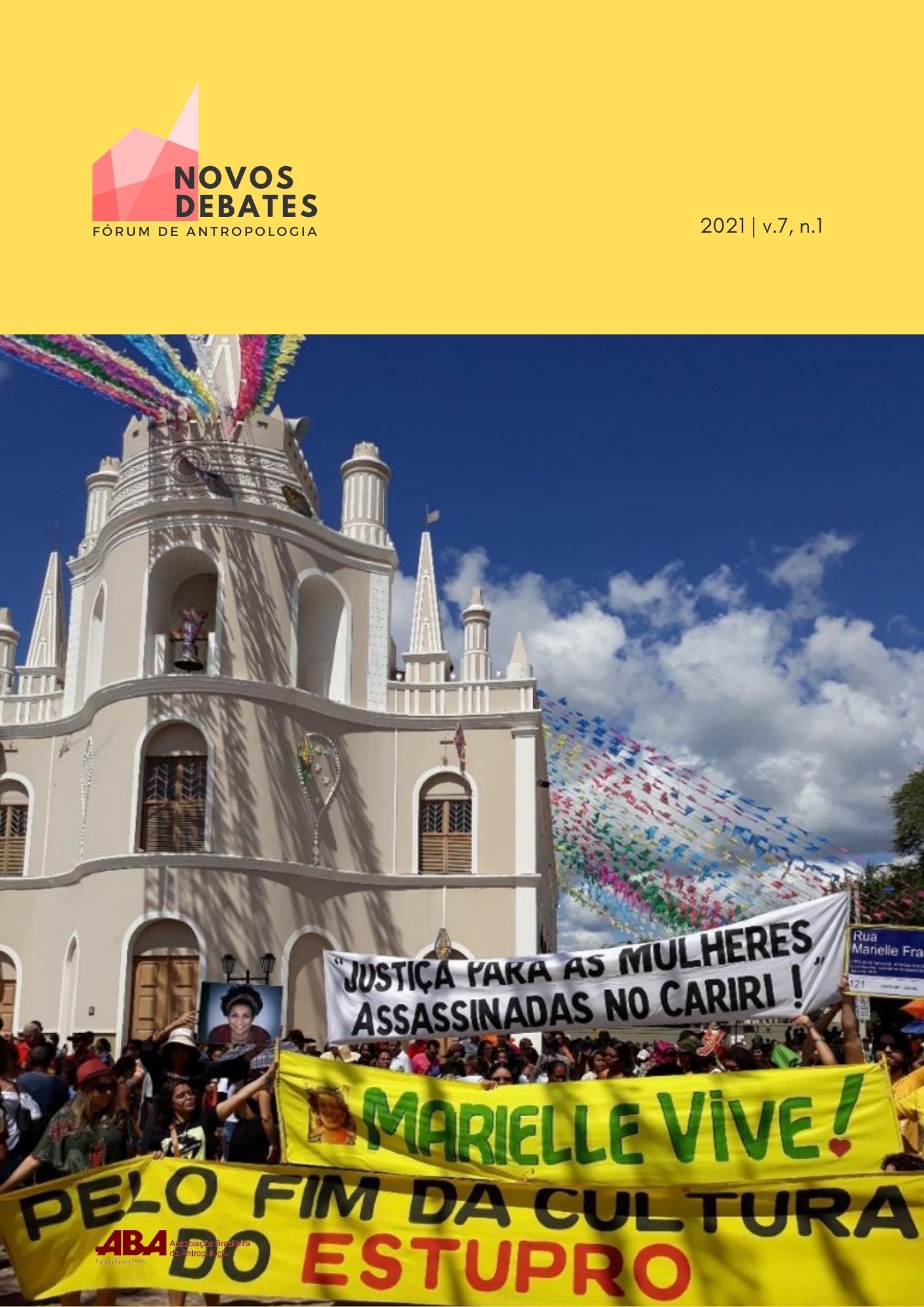Walk(ings)
Movement and learning in Tim Ingold
DOI:
https://doi.org/10.48006/2358-0097-7109Keywords:
Walking, Organism, Environment, Movement, LearningAbstract
The essay aims to discuss the ecological implications of walking, considering Tim Ingold’s perspective. Namely, the implications in the organism-environment relationship along the context and flow of walking. Evoking an ethnography of Van Gujjar walking and, another, about the paths and histories of the Tłı̨chǫ, the essay contrast them with the urban walking described by Goffman and Kawada. The emergence of modern cities and the accelerated rhythms of contemporary urban life led to several inversions in the logics and ways of walking of the mentioned ethnographic examples, the essay argues that such processes had a damaging impact not only on the 'procedurality' of walking but, consequently, the understanding of what it is to ‘dwell’.
References
AUGÉ, Marc. 1994. Não-Lugares: Introdução a Uma Antropologia da Supermodernidade. São Paulo: Papirus.
BROWN, Tom. 1978. The Tracker: The Story of Tom Brown, Jr. as Told by William Jon Watkins. Nova Iorque, Estados Unidos: Prentice Hall.
CURTIS, Elizabeth. 2008. “Walking Out of the Classroom: Learning on the Streets of Aberdeen”. In: Tim Ingold e Jo Lee Vergunst. Ways of Walking. Burlington, Estados Unidos: Ashgate. p. 143-154.
DAMÁSIO, António. 2018. A Estranha Ordem das Coisas: As Origens Biológicas da Cultura. São Paulo: Companhia das Letras.
GIBSON, James. 2015 [1979]. The Ecological Approach to Visual Perception. Nova Iorque, Estados Unidos: Taylor & Francis.
GOFFMAN, Ervin. 1971. Relations in Public: Microstudies of the Public Order. Londres, Reino Unido: Allen Lane.
GOOCH, Pernille. 2008. “Feet Following Hooves”. In: Tim Ingold e Jo Lee Vergunst. Ways of Walking. Burlington, Estados Unidos: Ashgate. p. 67-80.
INGOLD, Tim. 2015. The Life of Lines: A World Without Objects. Londres, Reino Unido; Nova Iorque, Estados Unidos: Taylor & Francis.
INGOLD, Tim. 2010. Being Alive: Essays on Movement, Knowledge and Description. Londres, Reino Unido; Nova Iorque, Estados Unidos: Taylor and Francis.
INGOLD, Tim. 2000. The Perception of the Environment: Essays on Livelihood, Dwelling and Skill. Londres, Reino Unido; Nova Iorque, Estados Unidos: Taylor and Francis.
KAWADA, Junzo. 1996. “Postures de portage et de travaux manuels – en rapport avec d’autres domaines de la vie japonaise”. Colloque Culture et Usages du Corps, Saint Germain en Laye, França.1–4 de março.
LEGAT, Alice. 2008. “Walking Stories; Leaving Footprints”. In: Tim Ingold e Jo Lee Vergunst. Ways of Walking. Burlington, Estados Unidos: Ashgate. p. 35-50.
OYAMA, Susan. 2000. The Ontogeny of Information: Developmental Systems and Evolution. Cambridge, Inglaterra: Duke University Press.
MAUSS, Marcel. 2003. “As Técnicas do Corpo”. In: Marcel Mauss. Sociologia e Antropologia. São Paulo: Cosac Naify. p. 399-422.
SUZUKI, Tadashi. 1986. The Way of Acting: The Theatre Writings of Tadashi Suzuki. Nova Iorque, Estados Unidos: Theatre Communications Group.
Downloads
Published
How to Cite
Issue
Section
License
Copyright (c) 2021 Novos Debates

This work is licensed under a Creative Commons Attribution 3.0 Unported License.
Open Access Statement
Novos Debates is an open access journal. We do not charge any fee for the publication of articles or for access to our issues. All our content, unless otherwise indicated, is licensed under Creative Commons Brazil Attribution 3.0 (CC BY 3.0 BR).
You are free to:
– Share — copy and redistribute the material in any medium or format
– Adapt — remix, transform, and build upon the material for any purpose, even commercially
– The licensor cannot revoke these freedoms as long as you follow the license terms.
Under the following terms:
– Attribution — You must give appropriate credit, provide a link to the license, and indicate if changes were made. You may do so in any reasonable manner, but not in any way that suggests the licensor endorses you or your use.
– No additional restrictions — You may not apply legal terms or technological measures that legally restrict others from doing anything the license permits.


